Stretching
Home > 09 Editing and Manipulation > Stretching
Stretching
The following commands stretch entities by moving individual or groups of points of the entities.
Stretching an Entity
Stretch an entity by a relative displacement by a point or fence.
\stretch
You can choose from the following stretching options:
Stretching points on an entity by fence
Stretching a point on an entity
Stretching indicated entities by fence
A description of each component of the combined command follows.
Stretching a Point on the Entity
Stretch an entity by moving one of its points by a relative displacement.
 NOTE You do not have to select the entities before using this command.
NOTE You do not have to select the entities before using this command.
Select two points defining the distance by which the points are to be moved, the from point and to point. You can define these points on or independent of the entity to be stretched.
Specify the point to be moved or press Enter if the first point you specified is the point to be moved.
The point is moved by the relative displacement between the first two points. All lines connected to the point are stretched to the new position.
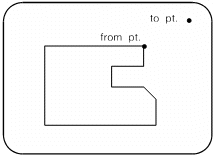
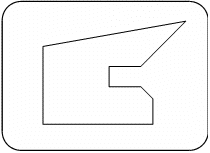
You can confirm or reject the result and continue moving additional points by the same displacement.
 NOTE Exceptional items that cannot be stretched are line and polygon arcs, placed objects, hatch entities, and complex solids.
NOTE Exceptional items that cannot be stretched are line and polygon arcs, placed objects, hatch entities, and complex solids.
This command stretches or shrinks part of the entity, as opposed to other move commands, which manipulate the entire entity without changing it.
Stretching Points on an Entity by a Fence
Move the contents of a specified fence by a relative displacement.
 NOTE You do not have to select the entities before using this command.
NOTE You do not have to select the entities before using this command.
Select two points defining the distance by which the points are to be moved, the from point and to point. You can define these points on or independent of the entity to be stretched.
Define a fence including all the points to be moved by specifying two opposite corners of the fence.
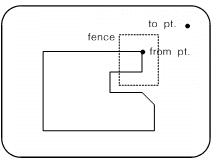
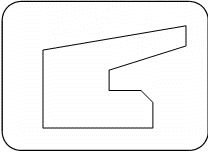
The points in the fence are moved by the relative displacement between the first two points. All lines connected to the moved points are stretched to their new positions. Exceptional items that can not be stretched are line and polygon arcs, placed objects and hatch entities.
Entities that are only partially within the fence are affected in a variety of ways, depending on the type of entity, as follows:
|
Entity type |
Entity Partially within Fence |
Entity Entirely within Fence |
|
Lines |
stretch |
move |
|
Line arcs |
no change |
move |
|
Polygons |
stretch |
move |
|
Polygon arcs |
move |
move |
|
Polygon solids |
stretch |
move |
|
Complex solids |
stretch |
move |
|
Hatch |
no change |
no change |
|
Linear patterns |
stretch |
move |
|
Placed objects |
no change |
move |
|
Text |
no change |
move |
|
Dimension lines, text |
stretch |
move |
You can confirm or reject the result and continue moving additional points by the same displacement
 NOTES If a point on the polygon is moved out of the plane of the polygon, the resulting polygon is a warped surface. The system then divides it into manageable triangular polygons. This command stretches or shrinks part of the entity, as opposed to other move commands, which manipulate the entire entity without changing it. Exceptional items that can not be stretched are line and polygon arcs, placed objects, hatch entities and complex solids. If you edit dimension text manually, and then move the dimension line with this command, a dialog box is displayed. Indicate whether you want to keep the previous changes to the dimension text or to update it.
NOTES If a point on the polygon is moved out of the plane of the polygon, the resulting polygon is a warped surface. The system then divides it into manageable triangular polygons. This command stretches or shrinks part of the entity, as opposed to other move commands, which manipulate the entire entity without changing it. Exceptional items that can not be stretched are line and polygon arcs, placed objects, hatch entities and complex solids. If you edit dimension text manually, and then move the dimension line with this command, a dialog box is displayed. Indicate whether you want to keep the previous changes to the dimension text or to update it.
Stretching Indicated Entities by Fence
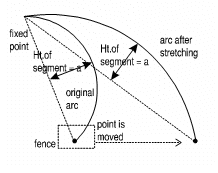
You can draw a fence around any part of your model, and then indicate only specific entities within that fence that you want to stretch, one at a time.
Stretching a line- or polygon-arc by fence now recalculates the arc and draws a new one.
